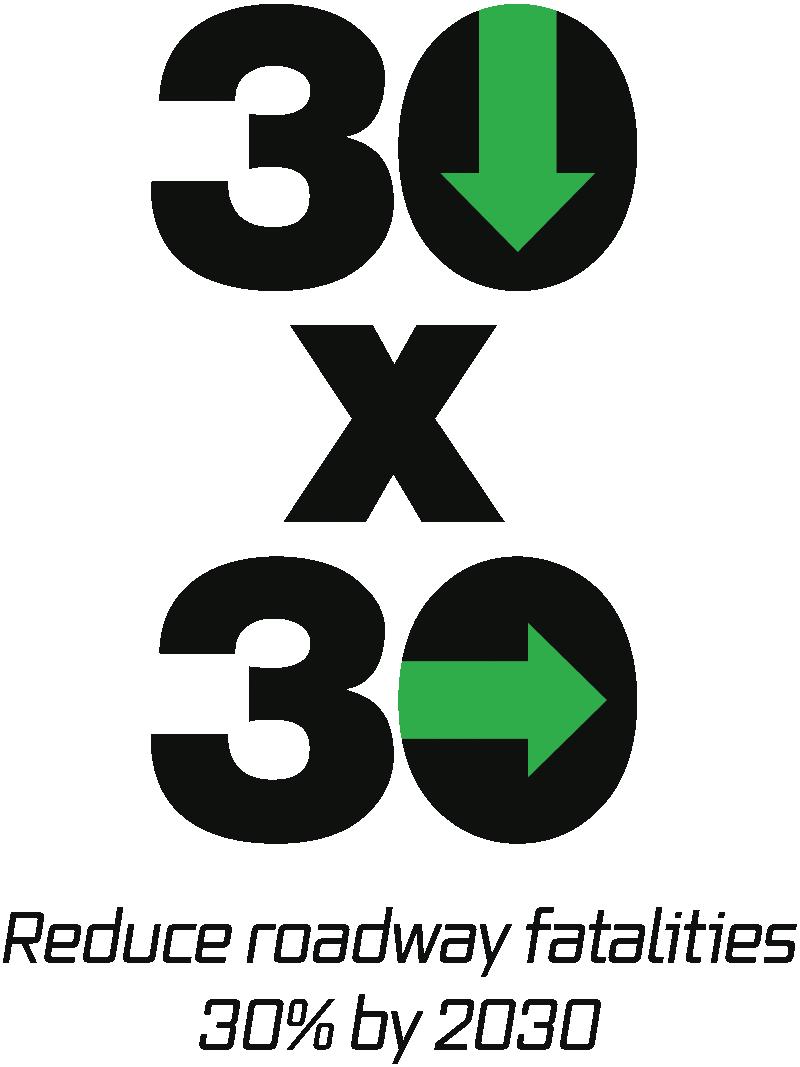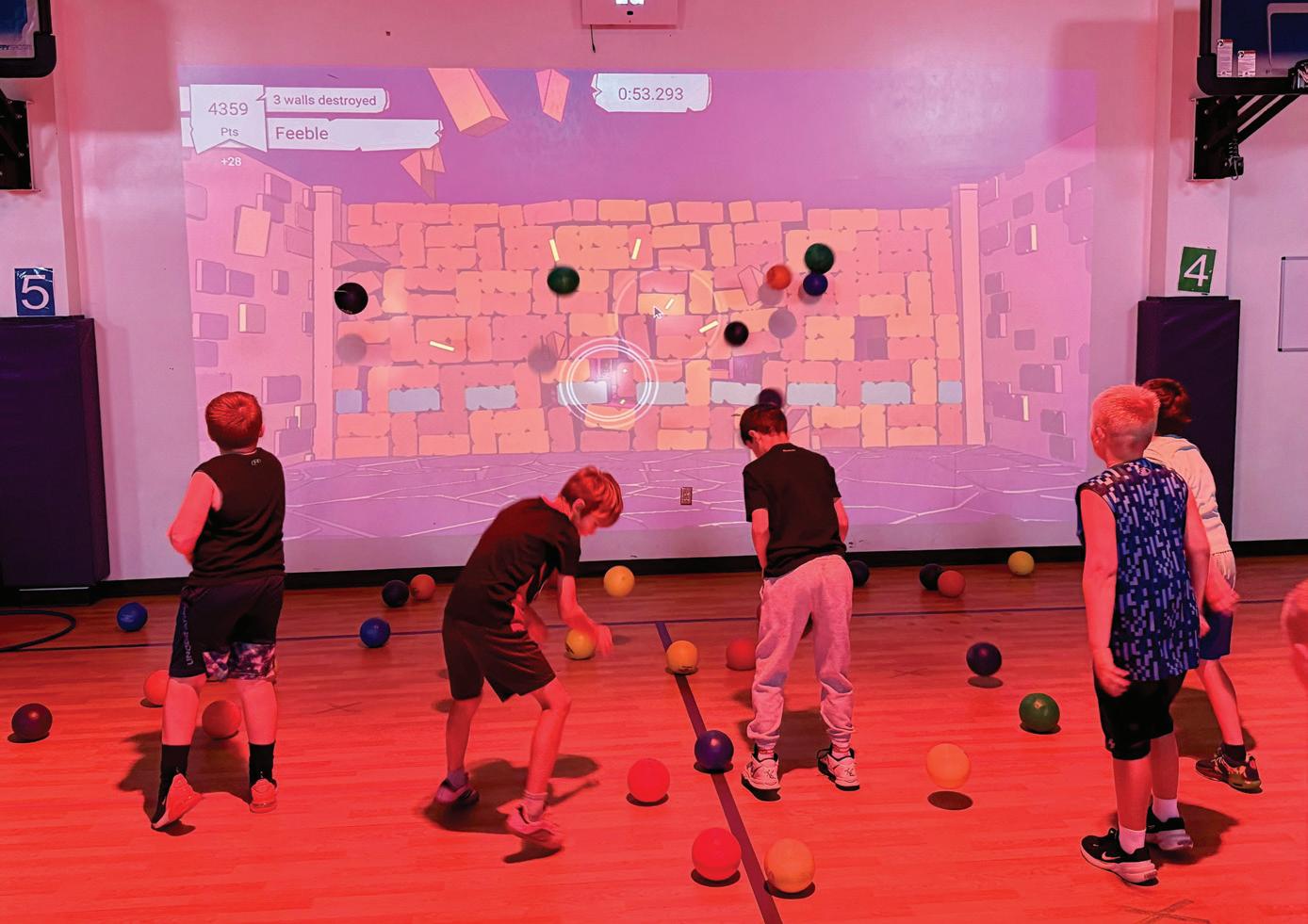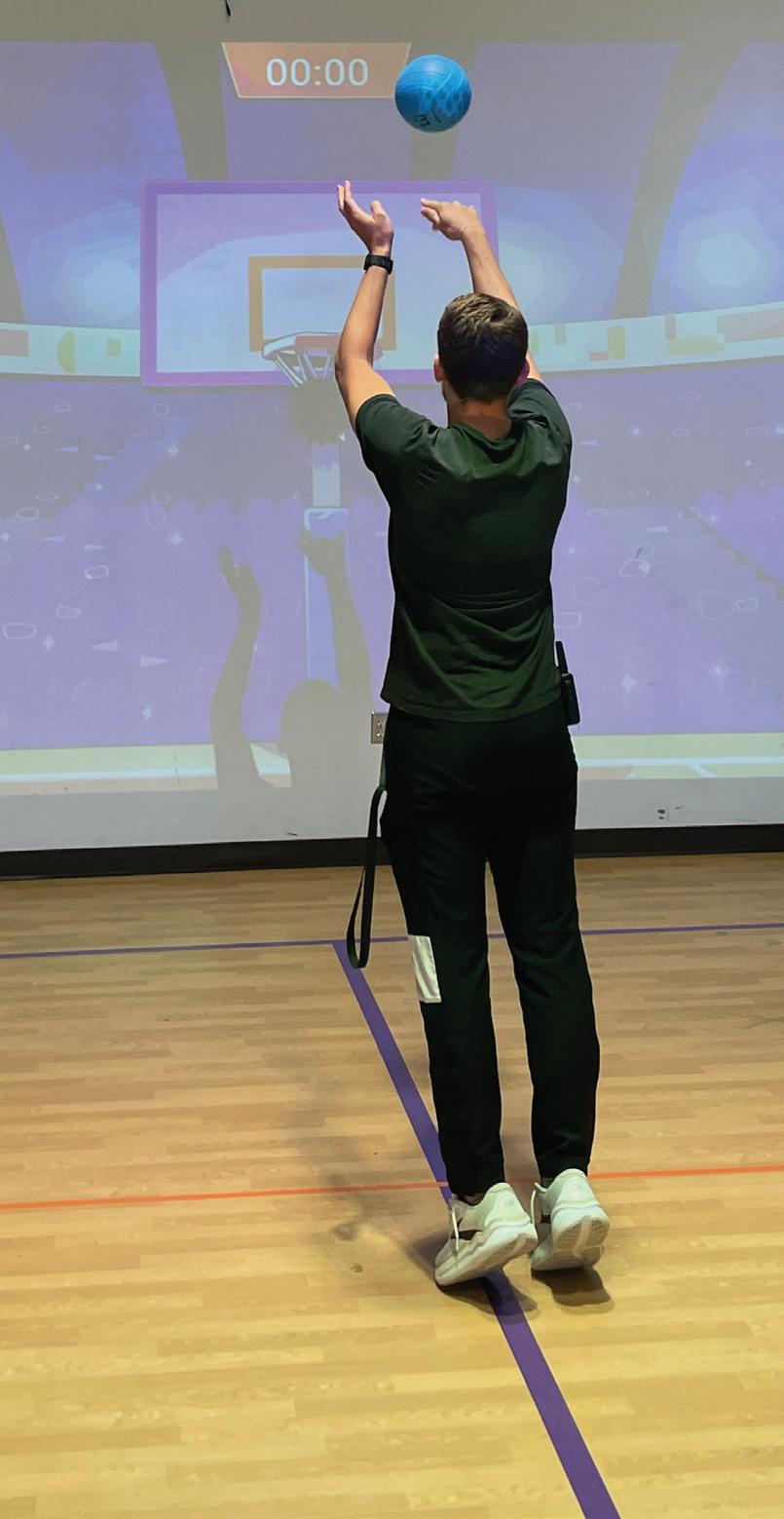From Veterans to Space Heaters, Plenty to Consider to Close ’25
by Greg Rogers, President and CEO
Here we are at the end of another year of magazine content. While I won’t be brash enough to say we’ve saved the best for last because there’s a CEO message in this issue’s pages, I can assure you the information that follows is timely and interesting, as always.
November and December are busy months for special occasions, from Veterans Day through Christmas. Now is as good a time as any to note SVEC proudly employs 12 veterans on staff and would welcome more as positions become available.
No matter what a veteran’s specialty was in the military, we have a home for them in our organization because we cover the gamut of physical, outdoor labor to meticulous number crunching with computer systems. A veteran’s greatest attribute is their discipline, which is necessary for utility work because working with electricity requires detailed safety processes and procedures to ensure safety of all those around.
Over their careers, co-op employees miss Christmases and other major holidays with their families since
CONTACT US
Mailing Address
180 Oakwood Dr, Rockingham, VA 22801
Phone Web
800-234-7832 • svec.coop
Email svecpr@svec.coop
Local Pages Editor Preston Knight
Local Pages Designer Ashley Kreis
If you would like to unsubscribe from receiving the print edition of Cooperative Living, email svecpr@svec.coop with your home address.
Shenandoah Valley Electric Cooperative is an equal opportunity provider and employer. SVEC supports our armed services and veterans in employment opportunities.
electricity has a knack for going off at inconvenient times. It’s a call of duty so to speak due to the critical necessity for electricity in our members lives, and what we’ve found is veterans come in with an innate sense of duty over self.
Please keep that in mind as we honor all veterans this month and then head into the holiday season, when all our employees will stand ready for issues created by inclement weather.
As you prepare for the holidays, please consider SVEC’s Gift of Light program. You decide the amount you want to give toward another co-op member’s seasonal electric bill. In return, we credit the recipient’s account and prepare a certificate to either be mailed to the recipient or sent directly to you for personal giving.
Please contact us at 1-800-234-7832 to place an order and lift someone’s spirits this holiday season.
Because of the extremely cold temperatures we often face in the wintertime, electric bills are going to be higher than normal. About 70% of what you pay for electricity comes from costs SVEC incurs from our wholesale power provider. But you can take measures to help hold down your bill.
One issue we often encounter is
over-reliance on space heaters, which are meant to heat people and not rooms. Do not leave them on if you are not present, which can be a safety issue on top of them not being energy efficient. Use your current heating system to the best of its abilities and limit how much you augment it with a space heater because that can have a dramatic effect on your bill.
While winter hasn’t settled in just yet, now is also the perfect time to seal any cracks your home might have. Keep that cold air outside — where it belongs — this winter. Stock up on a few extra blankets too, and maybe that will allow you to be comfortable while also adjusting the thermostat at, or closer to, the recommended energy-efficient setting of 68 once the bitter cold hits.
You might hear me say these things several more times until spring. Please listen to WSVA 550 in Harrisonburg and The River 95.3 out of Front Royal, where I provide monthly updates for co-op members, or visit our website for links to interview recordings. These are fun conversations that hit on many important topics across the cooperative.
Thank you again for reading our magazine and choosing to be an informed member. Please have a safe and happy holiday season. •

Holiday Hours
SVEC will be closed the following dates this holiday season:
• At 11:30 a.m. on Wednesday, Nov. 26, and all day Thursday, Nov. 27, and Friday, Nov. 28.
• At 11:30 a.m. on Wednesday, Dec. 24, and all day Thursday, Dec. 25.
• Thursday, Jan. 1.

‘Do the Simple Things’
Message of personal well-being resonates beyond the cooperative
by Preston Knight, Communication Manager
Safety isn’t always “sexy.”
This was David Kidd’s summation of the hour-long presentation he had just provided to SVEC employees in September. As a senior research scientist with the Insurance Institute for Highway Safety, he has any statistic someone could want to analyze the causes of car crashes and the effectiveness of solutions over the years at his disposal.
But the foundational answers are not all that elusive.
“Use your safety belt. Do the simple things. Reduce your speed. Pay attention,” Kidd said when asked to provide an impactful takeaway. “Those are not sexy.”
Indeed, as it relates to the electric utility industry, safety is not going to win any fashion awards. A lineworker’s bulky, insulated yellow sleeves evoke hard work, not glamour.
Still, the message across a twoday safety event for co-op employees resonated beyond the distribution lines the organization builds and maintains. Everyone has a role in the community’s safety, even if the actions necessary may not be the most appealing.
VIRGINIA’S SEAT BELT WOES
Kidd was the keynote speaker for the event. He covered a range of topics including the country’s 40year history of seat belt enforcement, which continues to change as research progresses. For example, as of July 2025, a new Virginia law requires all vehicle occupants, including passengers in the backseat, to wear a seat belt. It’s a secondary violation, meaning someone could be fined for

violating only after being stopped for another reason.
This law will help reduce the potential for backseat passengers to become projectiles in car crashes, putting those in the front seat in danger even if they are buckled up, Kidd says.
Unfortunately, in Virginia, front seat belt use seems to take a back seat among riders’ priorities. In 2023, which is the latest year national figures are available, 73% of front row occupants were using a seat belt in Virginia, the lowest use rate in the nation, Kidd says.
He described the insurance institute’s “30x30” campaign that was revealed earlier this year and seeks a 30% reduction in fatalities by 2030. According to the institute, in 1975, when the federal government began collecting comprehensive fatal crash statistics, the U.S. saw over 20 road deaths per 100,000 people. By 2014, that rate was cut nearly in half to 10.3. Lately, however, the insurance institute noted a struggle to maintain progress. In 2022, there were 12.8 crash deaths per 100,000 people.
Among 29 high-income countries, the U.S. has the highest crash fatality
“Use your safety belt. Do the simple things. Reduce your speed. Pay attention.”
– David Kidd, Insurance Institute for Highway Safety
rate, more than twice the average of the other 28, Kidd presented.
Suggested acts, according to the institute’s website, include building sidewalks along 10% of urban roads that lack them to reduce 232 pedestrian fatalities. In addition, passing all-rider helmet laws in five states with high numbers of motorcyclist fatalities would reduce deaths by 274, it states.
“We need to find the right people and organizations to lead [our actions],” writes David Harkey, president of the institute and its companion Highway Loss Data Institute. “In other words, which stakeholders can contribute to each specific effort? Who has the abilities and influence required? We
need champions!”
OPENING EYES
Following Kidd’s presentation, a rotation of various stations offered additional health and safety topics for co-op employees, to benefit them personally as much as professionally.
Virginia State Police troopers held what amounted to a town hall session, answering questions while also noting dangers that literally come with the territory. Interstate 81, particularly at its interchange with Interstate 66, is a growing route for drug and human trafficking, police say.

questions co-workers had for them.

“It was very interesting to hear from the state police officers firsthand.

Telling what their day to day usually deals with and what crimes are prevalent in our area with safety advice was eyeopening,” says Emily Reitz, an applications coordinator at SVEC. “It was also nice to hear what
You don’t often get a chance to talk to an officer in a relaxed setting where you feel open to inquire about details of local laws.”
The Virginia Department of Wildlife Resources shared information about venomous snakes, chronic wasting disease in deer and black bear mange — a highly contagious skin disease that affects many wild and domestic mammals.
“Everybody likes bears,” district wildlife biologist David Kocka says. “They serve a certain niche in the wild. Look at Shenandoah National Park. People go to see deer and bear, not the chestnutsided warbler.”
Elsewhere, leadership consultant Martin Lattman offered a key to better sleep: bananas, peanut butter and pumpkin seeds. And Bill Bosch, vice president of apprenticeships and client solutions at Northwest Lineman College, closed festivities by noting there are 35,000 decisions we make every day. He asks when you reach a “decision stop sign,” to consider which way you will turn. Do what’s right, even when that might be a basic choice and not, as some might say, “sexy.”
Bosch asks, “If you changed one decision that day, would [a] car wreck happen?” •










Why Where Your Power is Produced Matters
This is the latest in a series on electric grid reliability from SVEC’s wholesale energy provider, Old Dominion Electric Cooperative
When you flip a switch, you may not think about where your electricity comes from, only that it’s there when you need it.
But behind the scenes, the location of power plants plays a critical role in keeping the lights on for the best possible value.
Let’s explain, starting in our own backyard. Together with 10 other regional electric cooperatives, SVEC cooperatively owns ODEC, a not-forprofit wholesale electric generation and transmission provider. ODEC generates power for SVEC and its other 10 electric distribution member cooperatives across Virginia, Maryland and Delaware.
All ODEC owners are part of a vast regional grid called PJM Interconnection, which manages electricity for more than 65 million people across 13 states and the District of Columbia. PJM is like an air traffic controller for power, balancing supply and demand every day. Unlike airplanes that travel freely across the sky, electricity moves through a network of transmission lines. Those lines can become congested — like rush hour traffic.
This is where location matters.
PJM divides its footprint into zones that reflect how electricity flows and where demand is concentrated. Prices rise and fall depending on how easy — or difficult — it is to move power from the supply source to the destination.
Transporting electricity from one zone to another over a long distance almost always makes it more expensive. Every extra mile that power travels adds cost and risk. To best manage production costs, power generation, or the source, would ideally be in the same zone, or in proximity, where use occurs. Additionally, PJM’s reserve margins — the cushion of extra power generation that protects against shortages — are
shrinking as older plants retire faster than new ones come online. This makes local generation even more critical.
When reserves are thin and a line is congested, the system can’t always move enough power across zones to fill the gap. That means areas with too little local generation are most vulnerable to shortages and outages.
INVESTING WHERE IT COUNTS
ODEC has long balanced its portfolio across different fuels, technologies and locations. It has strategically invested in generation near its member cooperatives.
One of ODEC’s newest power commitments is the Wolf Summit Generation Facility in Harrison County, W. Va. Wolf Summit will bring 600 MW of natural gas generation into PJM’s Alleghany Power Systems zone, where ODEC currently serves its member cooperatives BARC, Rappahannock and SVEC. Adding generation in the same zone as load, or demand, from these member cooperatives helps insulate them from the extra costs — and growing reliability risks — of importing power.
ODEC is also a joint owner of the North Anna Nuclear Station in Louisa and the Clover Power Station in Halifax. North Anna provides always-on, carbon-free power that’s a cornerstone of Virginia’s energy mix. Clover, while coal-fired, continues to play a role in providing dependable
baseload generation at times when renewable energy and natural gas supply is tight. These investments ensure ODEC’s power supply isn’t tied to any single source or location.
NAVIGATING TODAY’S CHALLENGES
PJM’s system is facing challenges. Transmission projects can take a decade or more to plan and build, yet demand is rising at a breakneck pace. At the same time, environmental policies are phasing out traditional sources of power faster than new ones can be built. That creates uncertainty in the marketplace and puts more pressure on existing resources. As reserve margins shrink, the difference between a stable grid and a rolling blackout could come down to whether reliable generation is available in the right place at the right time.
ODEC has been vocal in raising concerns about these challenges, while planning for the future. ODEC makes long-term decisions with one goal in mind: ensuring that when you flip the switch, reliable and resilient power at the

best possible value is there. Because it turns out that, with electricity, as in real estate, location really is everything. •
Students solve math problems first, and then aim for the correct answer, intertwining traditional and physical education with the new Lu Interactive Playground in Strasburg.

Traditionally, brawn is preferred to brains when picking sports teams, but, thanks to a grant from the Moore Educational Trust, Sandy Hook Elementary School in Shenandoah County is changing that narrative.
With the school’s new Lu Interactive Playground, physical education is embedded with classroom lessons and brings an immersive experience to exercise. With dozens of applications that integrate learning objectives into competitive games, a winning team will need to know the answers before they can score points.
Johnathan Baker, one of Sandy Hook’s physical education teachers, is the one to thank for securing this roughly $40,000 grant for the school. The Moore Educational Trust, established upon the death of Helen Moore of Strasburg, has awarded grants to Shenandoah County Public Schools since 2002. This year, nine grants were awarded by the trust’s committee, including another at Sandy Hook for expanding the STEM program, totaling over $188,000 for the entire school division.
Baker has been working on having the Lu Interactive Playground implemented at Sandy Hook since he first learned about it from an instructional
Grant Provides Big Tech to Small-Town School
A new era of play at Sandy Hook Elementary School
by Lydia Weaver, Community Relations Specialist
technology coworker three years ago. With support from his administration, Baker felt confident in his grant application.
“This is something really cool,” he says. “This county doesn’t have [another] one. It’s been a whole year in preparation, with just installation and everything, so we just got to use this beginning in August this year.”
The rarity of the system extends beyond Shenandoah County because there are no other schools using Lu across the Valley. In fact, there are only a handful of the systems in play statewide, reiterating the necessity of a grant for this purchase.
WORK HARD, PLAY HARD
So, what is the Lu Interactive Playground exactly? Picture a child’s tablet: countless gaming options, touch screen, great graphics, sound effects, learning and entertainment. Now, imagine that it’s 20 feet wide, includes disco lights to fill the entire gymnasium, and you get to use it with all your friends at school. That’s Lu.
Peyton Coggsdale, another physical education teacher at Sandy Hook, says
the students don’t even realize they’re learning. They just think they’re having fun.
“That’s the point. That’s why we want to use this,” Coggsdale says. “It can incorporate content that is being used in the classroom rather than just physical education stuff. We have kids in here solving math problems, but they’re still exercising and moving around, or spelling words, but they have to do an exercise in between. They love it.”
The physical education department says the rest of the school’s teachers support the effort by providing content for them to integrate into Lu’s applications. From lesson reviews before testing to practicing new concepts, physical education classes can reinforce the required learning objectives. Even though there’s an added layer of preparation on the teacher’s part to edit applications, it isn’t overly time consuming.
Baker says employing lesson plans is basically plug and play, sometimes only needing to upload a screenshot of a document, but he can change the parameters as much as he’d like.
He regularly witnesses the added layer of knowledge come into play for
students working together at a game.
“[When] the kid who has the best arm is up front like, ‘I don’t know the answer,’ the people behind him are helping — walking him through how to do the math problem, and they work together,” Baker says.

Working together, students practice their throwing skills with the appeal of a video game.
Peter Ludlam, another physical education teacher at Sandy Hook, agrees that Lu is making many students feel more appreciated by their peers and more excited to participate.
“It also gives an opportunity for kids that, maybe, were reluctant in P.E. but really smart in other content areas, where they can help their team now with a particular question or something,” Ludlam says. “They’re all part of a team and feel that connectiveness to a P.E. specific activity. Now, they can contribute.”
Physical engagement levels have also risen among students who prefer video games to sports, notably among those who don’t often play outside or may otherwise complain about exercise activities in class.
“I do see kids that aren’t athletic, or don’t really go outside and exercise, or even play,” Baker says. “When I turn on that screen, those kids are the ones that are focused, raising their hands, answering questions, actually super into it and smiling while they’re moving.”
LEARNING THROUGH IMAGINATION
Of course, customized lesson integration is one of the most appealing features of the interactive playground, but there’s more. Besides covering classroom subjects like science or vocabulary, there are also applications for learning hygiene habits, healthy food choices, safety and sports of any kind. Being able to transform the gymnasium into a soccer field, baseball field, tennis court and more allows traditionally outdoor teaching to continue when weather isn’t accommodating.
While there are still countless other applications for physical movement, from stretching and breathing exercises to dancing, some apps are meant to assist the teacher in making the day’s preparation a little more entertaining for children. There’s an app that randomly assigns teams when a student selects a smiling cloud and an app that allows students to input their current emotions then creates a graph depicting how the class is feeling.
Baker says one of his favorite features to use, especially with the younger classes that are still adjusting to a structured school environment, is immersive worlds. With the click of a button, Lu can transform the gym and virtually transport students, letting
their imaginations lead the play.
“We can completely change this gym into whatever scene you want,” Baker says. “We’ve made an underwater theme. We’ve made a zoo theme. [Younger students] just completely change and follow directions. It’s so cool. I think it brings them to be able to actually focus. It’s a whole new world that they’re in. It’s not just regular school.
“Especially kindergarteners, they’re super new to the school, they don’t know what’s going on, but then they come out here to use their imagination and have fun.”
Coggsdale expands on the positive impact of the captivating feature, noting that it can feel like a new opportunity for some students.
“It’s also exposure,” he says. “Like the zoo, not all kids are able to go to the zoo.”
Whether it’s encouraging students to get more physically involved or inspiring more competitive kids to work harder in the classroom, the Lu Interactive Playground is a welcome addition to the school and should prove to be a great use of grant funding for years to come.
Despite the many options available to connect with the students, Baker says his favorite part of using the system is simple.
He says, “[It’s] seeing the different things we can do to make them smile.” •
Physical education teacher Peyton
Coggsdale demonstrates how Lu can be used to virtually teach sports while still using realistic movements.


The Following Rates Apply to All Members of Shenandoah Valley Electric Cooperative
SVEC Rate Terms
Distribution Charges: These offset a portion of the costs for the delivery of electricity to members. SVEC is regulated by the State Corporation Commission and is responsible for building and maintaining equipment and infrastructure, such as poles, wires and transformers. All members pay distribution charges, including those who generate and/or use renewable energy.
Electricity Supply Charges: These are sometimes called wholesale power charges and power cost adjustments. These costs are established by our wholesale provider, Old Dominion Electric Cooperative. They cover generating power, including renewables, and moving high-voltage electricity from a generation facility to SVEC’s local lines. These charges may vary slightly each month based on fluctuating market costs for producing electricity.
SVEC MONTHLY RATE SCHEDULES
Listed below are the schedules of monthly rates and availability clauses for the two predominant rates currently in effect for members of Shenandoah Valley Electric Cooperative. They include Residential and General Service rates. Rates not shown below include Large Power, Security Lighting, Churches, and Peak Control (PC-7). Complete rate information is available through your nearest SVEC office and on our website, svec.coop.
These rates are for members receiving total electric service, both distribution (delivery) and generation (electric supply), from SVEC. The major costs in these categories are itemized on the monthly statement for electric service.
The cooperative asks that you note the availability clause for each rate, comparing the information for availability to your own uses to be sure you are being billed under the proper rate. Each electric bill a member receives states whether the account is considered residential or general service by the heading “Current Charges.” This is located on the back of the bill in the upper left-hand side.
RESIDENTIAL (SCHEDULE
A-14)
Availability
Available to consumers for normal uses in permanent, single-family residences and residential farms. This schedule is not available for construction service. All service is subject to the established rules and regulations of the cooperative.
Type of Service
• Single-phase, 60-cycles at available voltage.
• Multi-phase, 60-cycles at available voltage.
Monthly Rate
A. Distribution Charge
1. Basic Consumer Charge: $30 per billing month single-phase; $37.50 multi-phase.
2. Variable Distribution Charge: All kWhs/
month @ 2.672 cents per kWh.
B. Power Supply Charges
1. June-Sept. billing: First 800 kWh @ 6.380 cents per kWh; Excess over 800 kWh @ 9.024 cents per kWh; Oct.-May billing: All kWhs/month @ 6.380 cents per kWh.
2. The above charges are subject to adjustment for changes in Wholesale Power Costs as per the cooperative’s Power Cost Adjustment Clause, Schedule PCA.
Note: The above distribution charges and power supply charges apply to those consumers who have the cooperative as their energy service provider. Only the distribution charges apply to those consumers who have an electricity supplier other than the cooperative as their energy provider.
GENERAL SERVICE (SCHEDULE B-14) Availability
Available to consumers for general service, commercial, industrial, single, or multi-phase service, and all other non-residential service for all uses subject to the established rules and regulations of the cooperative.
Type of Service
Single and/or multi-phase, 60-cycles, at available secondary voltage.
Monthly Rate
A. Distribution Charge
1. Basic Consumer Charge: $30 per billing month single-phase; $37.50 per billing month multi-phase.
2. Variable Distribution Charge
a. Demand Charge: First 20 kilowatts of billing demand – $4.15 per kW; All kilowatts of billing demand in excess of 20 – $7.70 per kW
b. Plus RKVA @ $0.59 per RKVA
c. Plus Energy Charge: First 500 kWh @ 2.262 cents per kWh; Next 3,700 kWh @ 0.207 cents per kWh; Excess over 4,200 kWh @ 0.079 cents per kWh.
B. Power Supply Charges
1. All kWhs June-Sept. billing: 6.979 cents per kWh; All kWhs Oct.-May billing: 6.066 cents per kWh.
2. The above charges are subject to adjustment for changes in Wholesale Power Costs as per the cooperative’s Power Cost Adjustment Clause, Schedule PCA.
Note: The above distribution charges and power supply charges apply to those consumers who have the cooperative as their energy service provider. Only the distribution charges apply to consumers who have an electricity supplier other than the cooperative as their energy provider.
C. Minimum Distribution Charge
The minimum Distribution Charge per month or fraction thereof shall be the highest of the following:
1. The Basic Consumer Charge; or
2. The Billing Demand Charge in A.2.(a) above times the greater of (a) 50% of the highest monthly billing demand established during the preceding calendar year, or (b) 50% of the consumer’s requested capacity; or,
3. The minimum specified in the contract for service.
Billing Demand
The billing demand shall be the maximum 15-minute kilowatt demand recorded by a meter during the billing month.
Determination of RKVA Demand
The cooperative reserves the right to measure and bill for RKVA. The RKVA demand shall be the maximum RKVA demand measure in any 15 minute period during the month for which the bill is rendered.
Temporary Service
Temporary service shall be supplied in accordance with the foregoing rate except that the consumer shall pay in addition to the foregoing charges, the total cost of installing and removing the service, less the value of materials returned to stock. A deposit, in advance, may be required for the full amount of the estimated bill for service, including the cost of installation and removal.
Service at Primary Voltage
If primary service is furnished between 2KV to 25KV, a discount of $0.26 per kW of Distribution
Billing Demand shall apply to the distribution charges. If primary service is furnished above 25KV, a discount of $0.53 per kW of Distribution
Billing Demand shall apply to the distribution charges.
